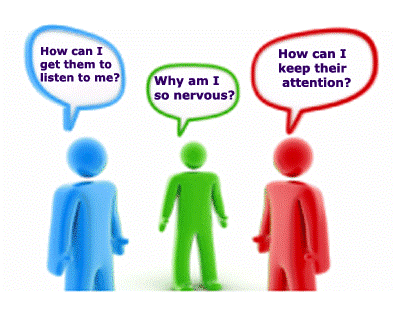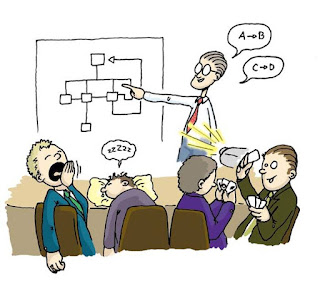The following are four surprising truths which have been established and validated by research. Hope you find this interesting !
1. We don't notice what's right in front of us
In 1998, researchers from Harvard and Kent State
University targeted pedestrians on a college campus to determine how much
people notice about their immediate environments. An actor came up to a pedestrian and asked for directions. While the pedestrian
was giving the directions, two men carrying a large wooden door walked between
the actor and the pedestrian, completely blocking their view of each other for
several seconds. During that time, the actor was replaced by another actor, one
of a different height and build, and with a different outfit, haircut and
voice.
Half of the participants didn't notice the substitution.
The experiment was one of the first to illustrate the phenomenon
of "change blindness," which shows just how selective we are about
what we take in from any given visual scene -- and it seems that we rely on
memory and pattern-recognition significantly more than we might think.
2. Power Corrupts
In this study conducted in 2003, two students were instructed to write the paper, while
the other was told to evaluate the paper and determine how much each student
would be paid.
 In the middle of their work, a researcher brought in a plate of
five cookies. Although generally the last cookie was never eaten, the
"boss" almost always ate the fourth cookie -- and ate it sloppily,
mouth open.
In the middle of their work, a researcher brought in a plate of
five cookies. Although generally the last cookie was never eaten, the
"boss" almost always ate the fourth cookie -- and ate it sloppily,
mouth open.
"When researchers give people power in scientific
experiments, they are more likely to physically touch others in potentially
inappropriate ways, to flirt in more direct fashion, to make risky choices and
gambles, to make first offers in negotiations, to speak their mind, and to eat
cookies like the Cookie Monster, with crumbs all over their chins and
chests," noted Dacher Keltner, one of the study leaders.
3. The only thing one needs to be happy
The 75-year Harvard Grant study --one of the most comprehensive
longitudinal studies ever conducted -- followed 268 male Harvard undergraduates
from the classes of 1938-1940 (now well into their 90s) for 75 years, regularly
collecting data on various aspects of their lives. The universal conclusion?
Love really is all that matters, at least
when it comes to determining long-term happiness and life satisfaction.
The study concluded that there are two pillars of happiness: "One is love. The other is finding a
way of coping with life that does not push love away."
4. Delaying gratification can make you more successful
This study was done in Stanford University in the late 1960s . It tested preschool children's
ability to resist the lure of instant gratification -- and it yielded some
powerful insights about willpower and self-discipline. In the experiment,
four-year-olds were put in a room by themselves with a marshmallow on a plate
in front of them, and told that they could either eat the treat now, or if they
waited until the researcher returned 15 minutes later, they could have two
marshmallows.
While most of the children said they'd wait, they often struggled
to resist and then gave in, eating the treat before the researcher returned. The children who did manage to hold off for the full 15 minutes generally used
avoidance tactics, like turning away or covering their eyes. The implications
of the children's behavior were significant: Those who were able to delay
gratification were much less likely to be obese, or to have behavioural problems by the time they were teenagers, and were
more successful later in life.






















